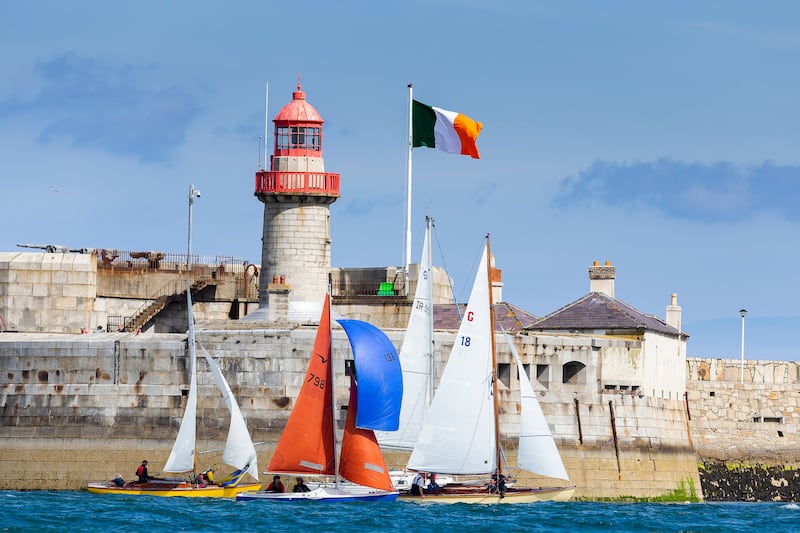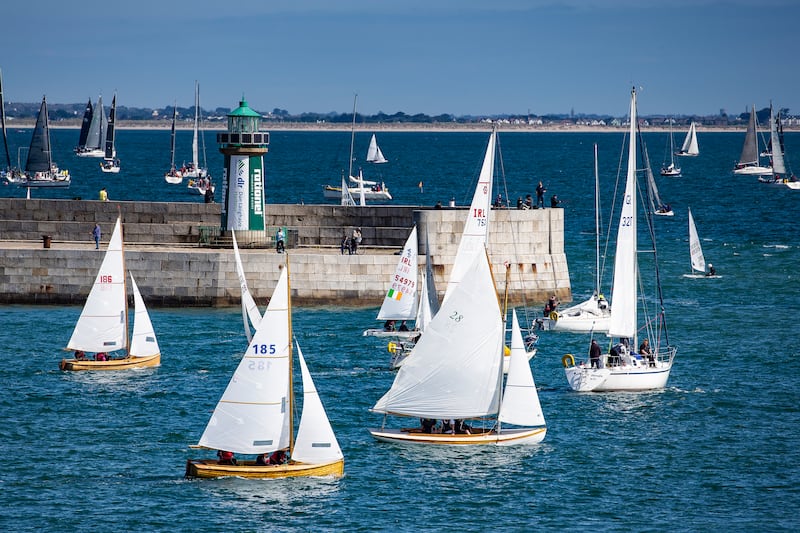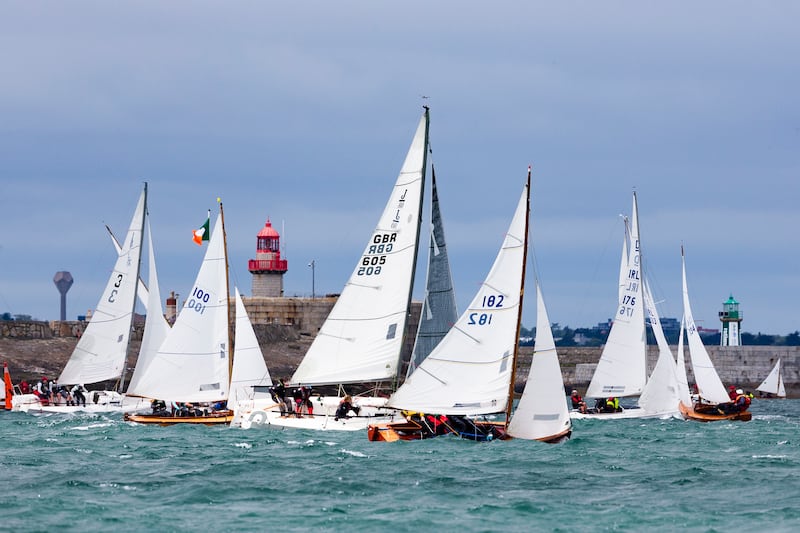With less than a week to go, Ireland’s biggest sailing event on the domestic fixtures list is set to just reach the magical 400 entry turnout, with 40 different classes returning for the first time since 2019.
The Volvo Dún Laoghaire Regatta is the latest milestone of putting clear blue ocean between today and the Covid pandemic.
In the intervening four years, there are plenty of new boats and still no shortage of tradition for the area that maritime historian Hal Sisk refers to as “the Cradle of Yachting.”

Much has changed in the 185 years since the first club appeared on the newly dedicated Kingstown waterfront, and this year’s event and associated Coastival shoreside fete heralds next year’s centenary of the renaming to Dún Laoghaire Harbour.
Opposite ends of the sailing spectrum will be on display over the four days of racing that begins on Thursday 6th.
The Wicklow-based naval architect Mark Mills will have six of his Cape 31 designs competing on Dublin Bay, arguably with the most international line-up of any of the fleets competing.
While Anthony O’Leary’s Antix from the Royal Cork Yacht Club has the long-standing pedigree to top the home fleet against Howth’s Dan O’Grady and David Maguire, their overseas forays have won the interest of entries from the Isle of Man, Cowes and Cape Town.
That the regatta draws a sizeable following from up and down the Irish Sea is well-established and more than evident among the cruiser classes best able to travel on their “own bottoms”.

Although more classes have been added this year, there is still some distance to go to regain the pre-pandemic era when more than 500 boats raced in 2019, a record that eclipsed the previous 480 boat event in 2007.
The line-up of classes is still dominated by the traditional fleets, while other national classes that offer plentiful numbers could still be accommodated. New classes such as the Melges 15, newly arrived on Dublin Bay and being trialled elsewhere, were unable to garner a quota of entries in time for next week.
But the growth in those local classes is undeniable and more recent fleets such as the J80′s, many of which are club-owned, have boosted participation.
On the traditional end of the racing spectrum, the return of the hallmark Dublin Bay 21 class, so far with four fully restored boats in a project spearheaded by Sisk and Fionán de Barra, are sure to be talking points of the regatta.
Similarly, the world’s oldest one-design class has gone from strength to strength, with new boats added bringing the turnout next week in the Water Wag class to 17 entries.

Among the modern dinghies, as single-handers both the ILCA6 (Laser Radial) and ILCA7 (Laser Standard) were features of Covid resilience and will have 25 entries between them.
But where the biggest numbers are most likely – both in terms of crew and entries – are among the cruisers competing on IRC handicap. By the far the biggest turnout will be in the highly competitive Class 1, which includes the J109 fleet.
The regatta will be a good indicator of form ahead of September’s Irish Cruiser Racing Association National Championships sponsored by Monday.com, to be hosted by Howth Yacht Club.















